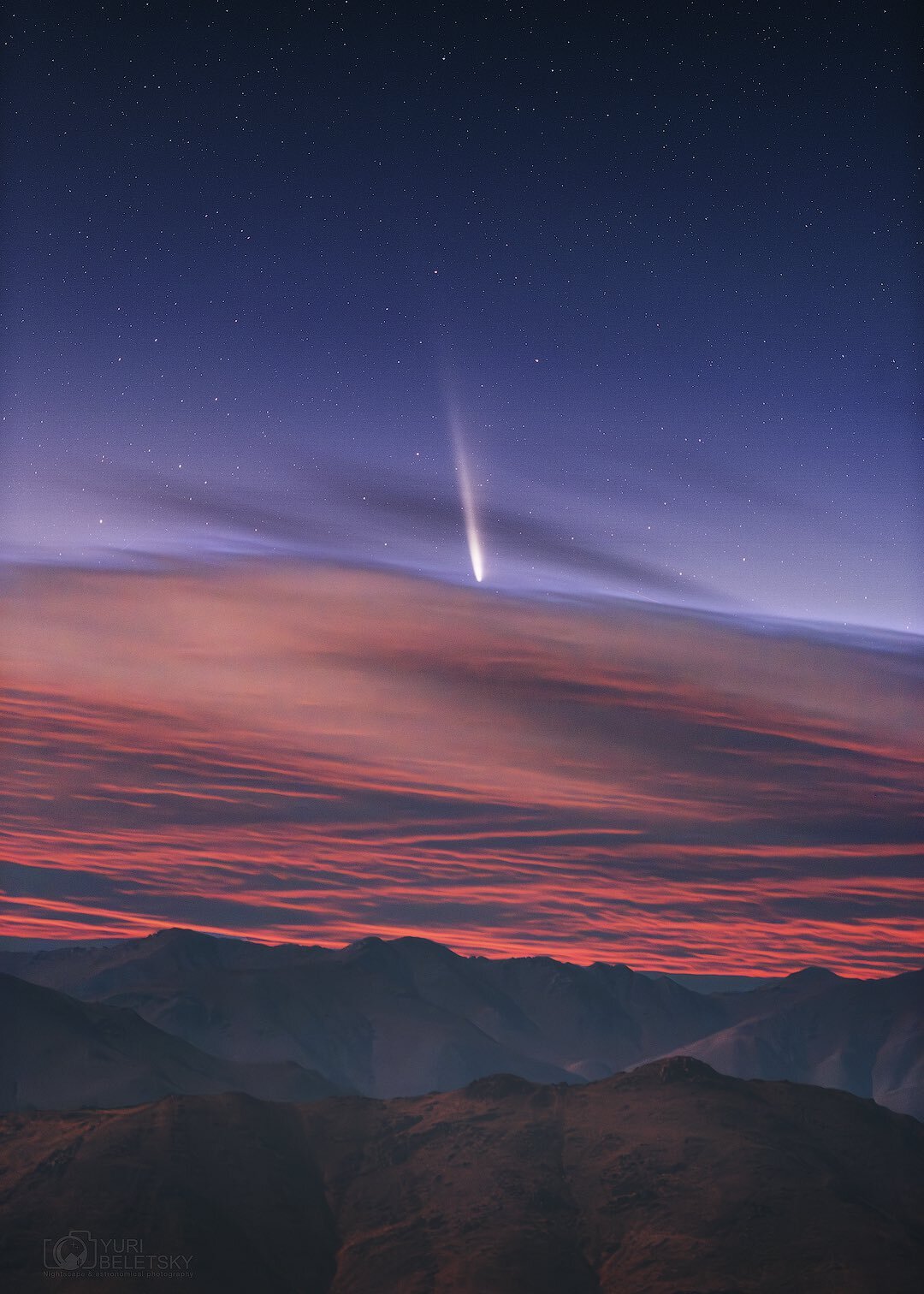Astrophotographer Yuri Beletsky published a colorful photo taken on the morning of September 24 in Chile’s Atacama Desert. It shows comet C/2023 A3 (Tsuchinshan-ATLAS) decorating the predawn sky.

Comet C/2023 A3 (Tsuchinshan-ATLAS) has been a major astronomical topic in recent weeks. It is now rapidly approaching the perihelion of its orbit, which will pass on September 27. The comet will pass at a distance of 60 million kilometers from the Sun, which is comparable to the radius of Mercury’s orbit.
Astronomers are interested in C/2023 A3 (Tsuchinshan-ATLAS) due to its being a “newcomer” to the Solar System. The comet has come from the Oort cloud, a distant realm of icy objects left behind after the formation of the Sun. Which means its core has never been heated in the last five billion years. This puts the hope that C/2023 A3 (Tsuchinshan-ATLAS) will turn out to be a bright comet with a very extended tail that can be seen with the naked eye from Earth.
Despite some concerns that the tailed visitor might not survive a close encounter with the Sun, so far C/2023 A3 (Tsuchinshan-ATLAS) is meeting expectations. Its brilliance and tail continue to grow, as clearly demonstrated by Yuri Beletsky’s photo.
Now the comet can be observed in the Southern Hemisphere shortly before sunrise. But the most interesting will begin in October. The comet will be available for observations in the Northern Hemisphere on October 12 – 13: right after it reaches its peak of brilliance. If the brightness predictions of C/2023 A3 (Tsuchinshan-ATLAS) are confirmed, it will present astro-amateurs with a very beautiful spectacle, and we will get many more exciting images of the tailed visitor.
You can learn more about the discovery and observational history of comet C/2023 A3 (Tsuchinshan-ATLAS) in this article.


